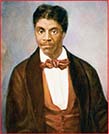American Issues  Connector: Federal Power and States’ Rights
Connector: Federal Power and States’ Rights

Exhaust and waste gases from cars are just one of the many issues in the center of the continuing national debate about the environment.
TRACK THE ISSUE
![]() How much power should the federal government have?
How much power should the federal government have?
Under the Constitution, all powers not granted to the federal government belong to the states. Over time, however, the federal government has expanded its scope, especially in the area of social programs. Use the timeline below to explore this enduring issue.
-
1791 Bill of Rights
Tenth Amendment reserves most powers to the states.
-
1798 Kentucky and Virginia Resolutions
States argue that they can void federal legislation.
-
1831 Nullification Crisis
John C. Calhoun declares that states may overturn federal laws.
-
1857 Dred Scott v. Sandford
Supreme Court rules that federal government does not have power to outlaw slavery within territories.
-
1930s New Deal
Government expands power over economy and social services.
-
1965 Voting Rights Act
Law allows federal officers to register voters.

Dred Scott
DEBATE THE ISSUE
The Environment and States’ Rights Since 1967, the Environmental Protection Agency (EPA) allowed California to make its own emissions rules. California is exempt from the Clean Air Acts as long as its rules are stricter than those of the Federal Government and it obtains a waiver from the federal government. In November 2007, Governor Arnold Schwarzenegger sued the Federal Government because the EPA denied California a waiver.
“The authority of the States to address greenhouse gas emissions from motor vehicles has been supported—by the Supreme Court [and] by a federal court here in California. On this issue, the … EPA … has failed to follow the States’ lead … we are prepared to force it out of the way … to protect the environment.”
—Governor Arnold Schwarzenegger, April 2, 2008
“I believe that Congress by passing a … federal standard of 35 mpg (miles per gallon) delivers significant reductions that are more effective than a state-by-state approach. This applies to all 50 states…. and that’s great for the economy, for national security, and for the environment.”
—Stephen L. Johnson, EPA Administrator
 TRANSFER Activities
TRANSFER Activities
- Compare Why does Governor Schwarzenegger feel California should oppose the federal government? Why does Stephen Johnson disagree?
- Analyze Should a state have the right to determine its own environmental standards?
- Transfer Use the following Web site to see a video, try a WebQuest, and write in your journal. Web Code: neh-7002




